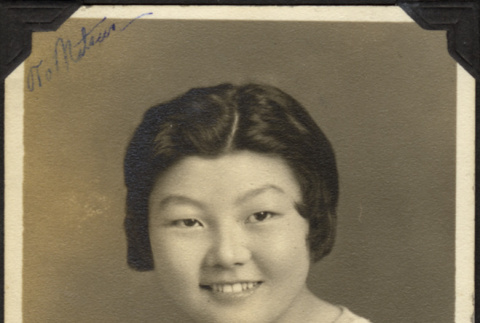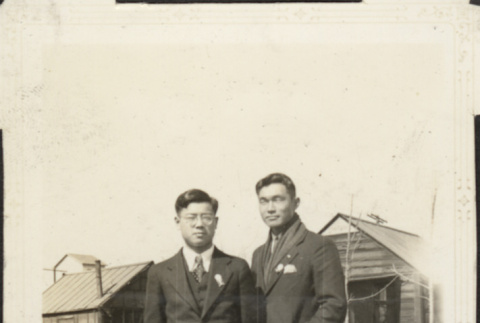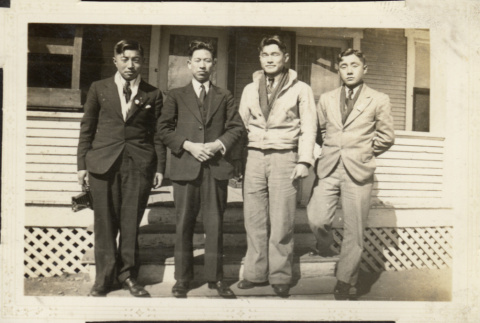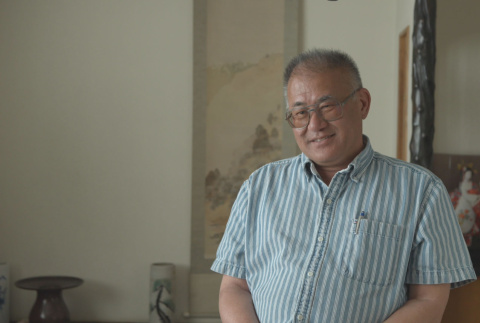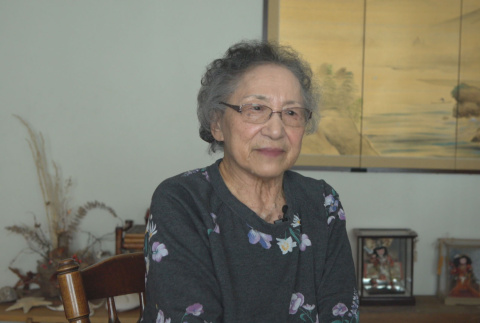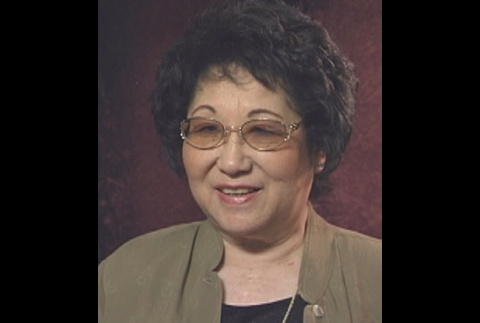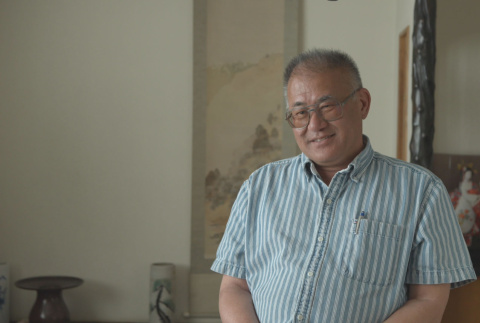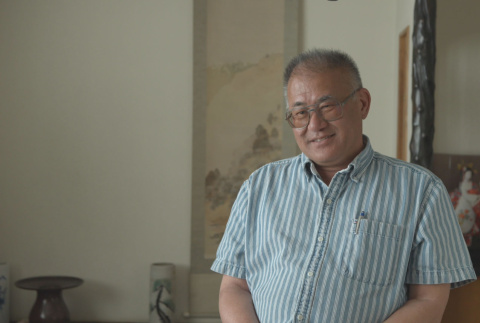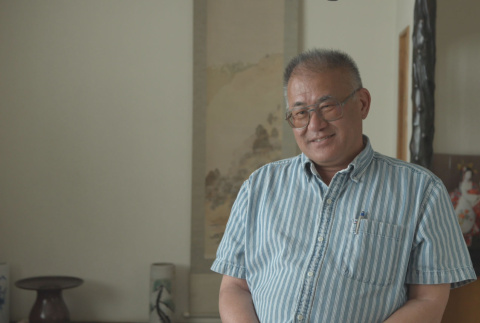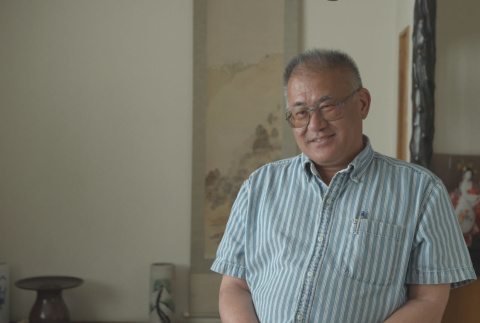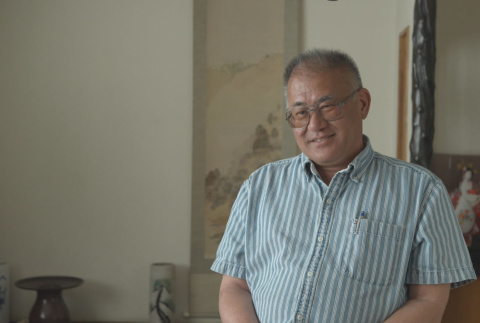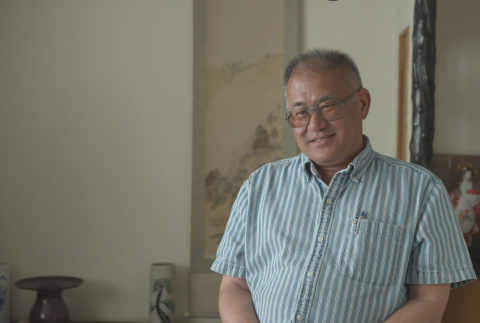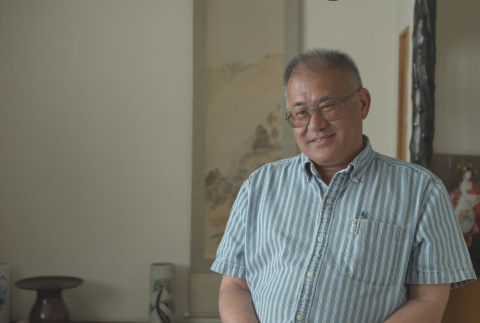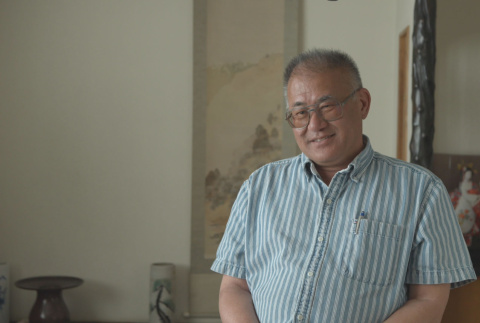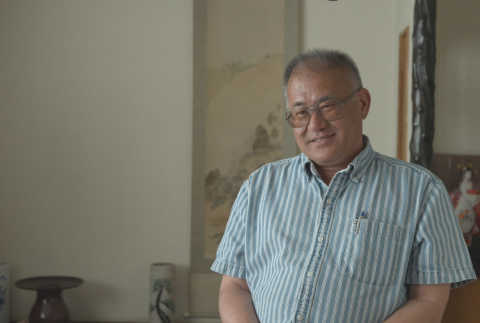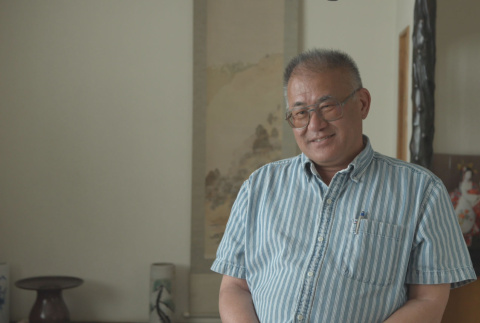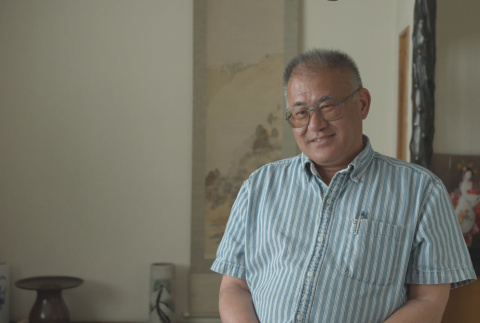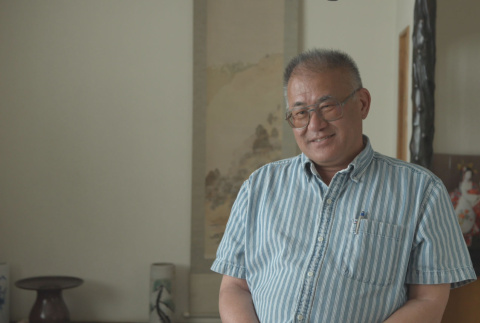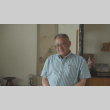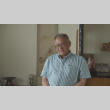105 items
105 items
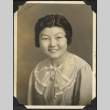
img
Portrait of Sue Yamamoto (ddr-densho-326-471)
Written on photo: To Matsuo, A friend, Sue. Caption: Sue Yamamoto / Wapato
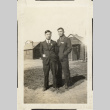
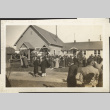
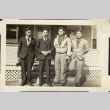
img
Four men (ddr-densho-326-448)
Caption: 1935 / Wapato Japanese School / Tokio T. / Mr. Matsumoto / Matsu / tokio Y

vh
Lon Inaba Interview (ddr-densho-1000-537)
Sansei male. Born September 15, 1955, in Yakima, Washington. Grew up in the Yakima area, where several generations of family members had run a farm since before World War II. Prior to the war, since Japanese immigrants were barred from purchasing land, Lon's grandfather and great-grandfather had leased land from the Yakama Indian tribe. After they …
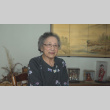
vh
Shiz Inaba Interview (ddr-densho-1000-538)
Nisei female. Born September 19, 1929, in Portland, Oregon. Grew up in Milwaukie, Oregon, where parents ran a farm. During World War II, removed to the Portland Assembly Center, Oregon, and the Minidoka concentration camp, Idaho. After leaving camp, returned to Oregon and parents ran a hotel business in Portland. Went to business school and worked …

Narrator Kazue Yamamoto
Nisei female. Born January 14, 1927, in Wapato, Washington, where family operated a truck farm. Following the bombing of Pearl Harbor, removed to North Portland Assembly Center and Heart Mountain concentration camp, Wyoming. Family left camp in 1945 for Spokane, Washington. Worked as a domestic on Spokane's South Hill before becoming a licensed beautician. Married husband …
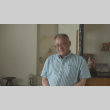
vh
Lon Inaba Interview Segment 11 (ddr-densho-1000-537-11)
Father's questioning of the exclusion orders
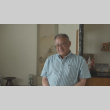
vh
Lon Inaba Interview Segment 6 (ddr-densho-1000-537-6)
The impact of the alien land laws on grandparents' farm
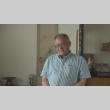
vh
Lon Inaba Interview Segment 3 (ddr-densho-1000-537-3)
Paternal family's immigration to the United States
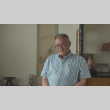
vh
Lon Inaba Interview Segment 8 (ddr-densho-1000-537-8)
Grandparents' relationships with the Native Americans, leasing land

vh
Lon Inaba Interview Segment 5 (ddr-densho-1000-537-5)
Grandparents' early farming on the Yakama Reservation
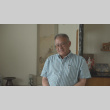
vh
Lon Inaba Interview Segment 10 (ddr-densho-1000-537-10)
Still growing crops up until the mass removal
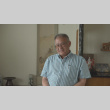
vh
Lon Inaba Interview Segment 15 (ddr-densho-1000-537-15)
Family members' activities in the immediate postwar
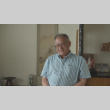
vh
Lon Inaba Interview Segment 21 (ddr-densho-1000-537-21)
Returning with brother to the family farm to help father
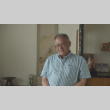
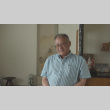
vh
Lon Inaba Interview Segment 18 (ddr-densho-1000-537-18)
Growing up among non-Japanese American friends
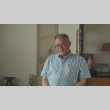
vh
Lon Inaba Interview Segment 9 (ddr-densho-1000-537-9)
Hearing about a visit from the Ku Klux Klan
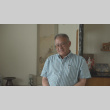

vh
Lon Inaba Interview Segment 22 (ddr-densho-1000-537-22)
Using engineering background to improve the farm

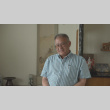
vh
Lon Inaba Interview Segment 13 (ddr-densho-1000-537-13)
Father and uncle's short term leave from camp to work on local farms
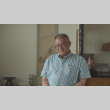
vh
Lon Inaba Interview Segment 14 (ddr-densho-1000-537-14)
Family's return to the Yakima valley: mixed reception
